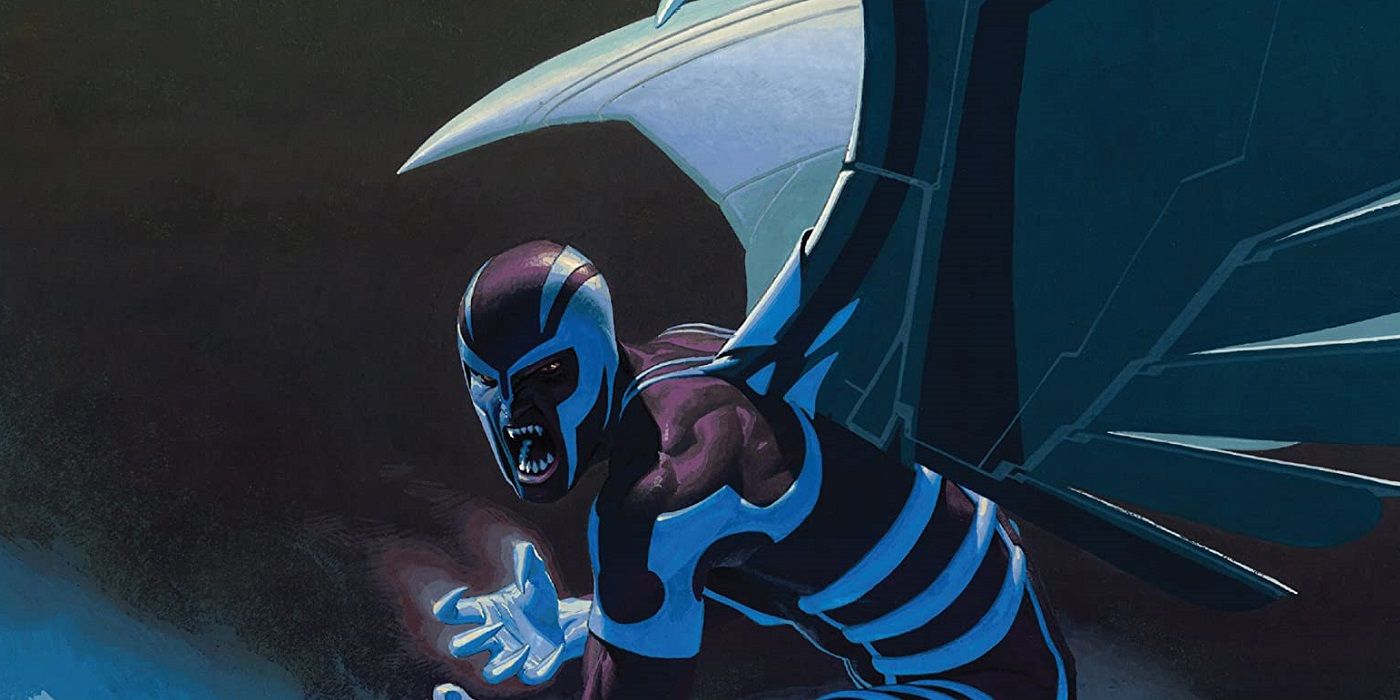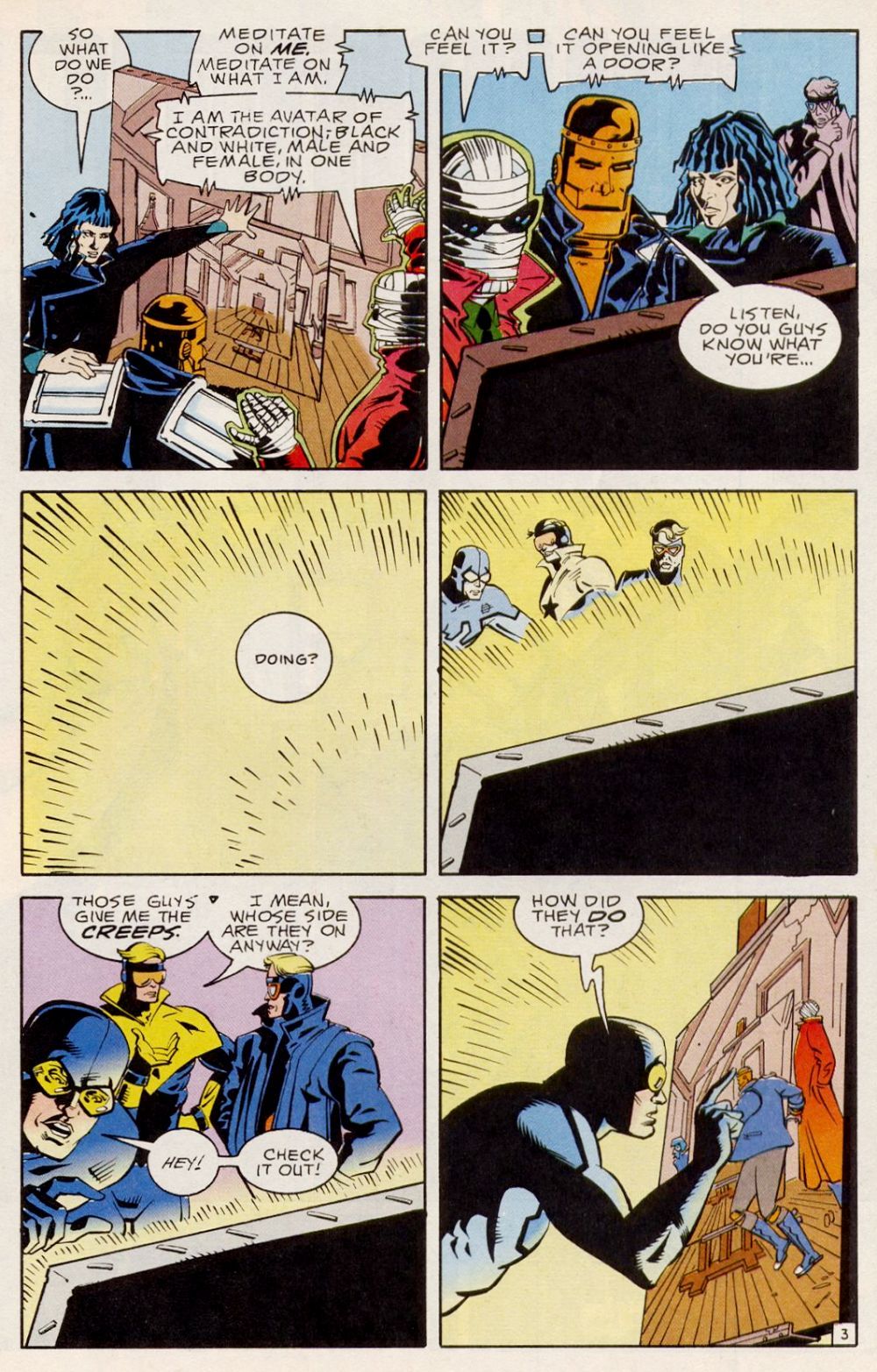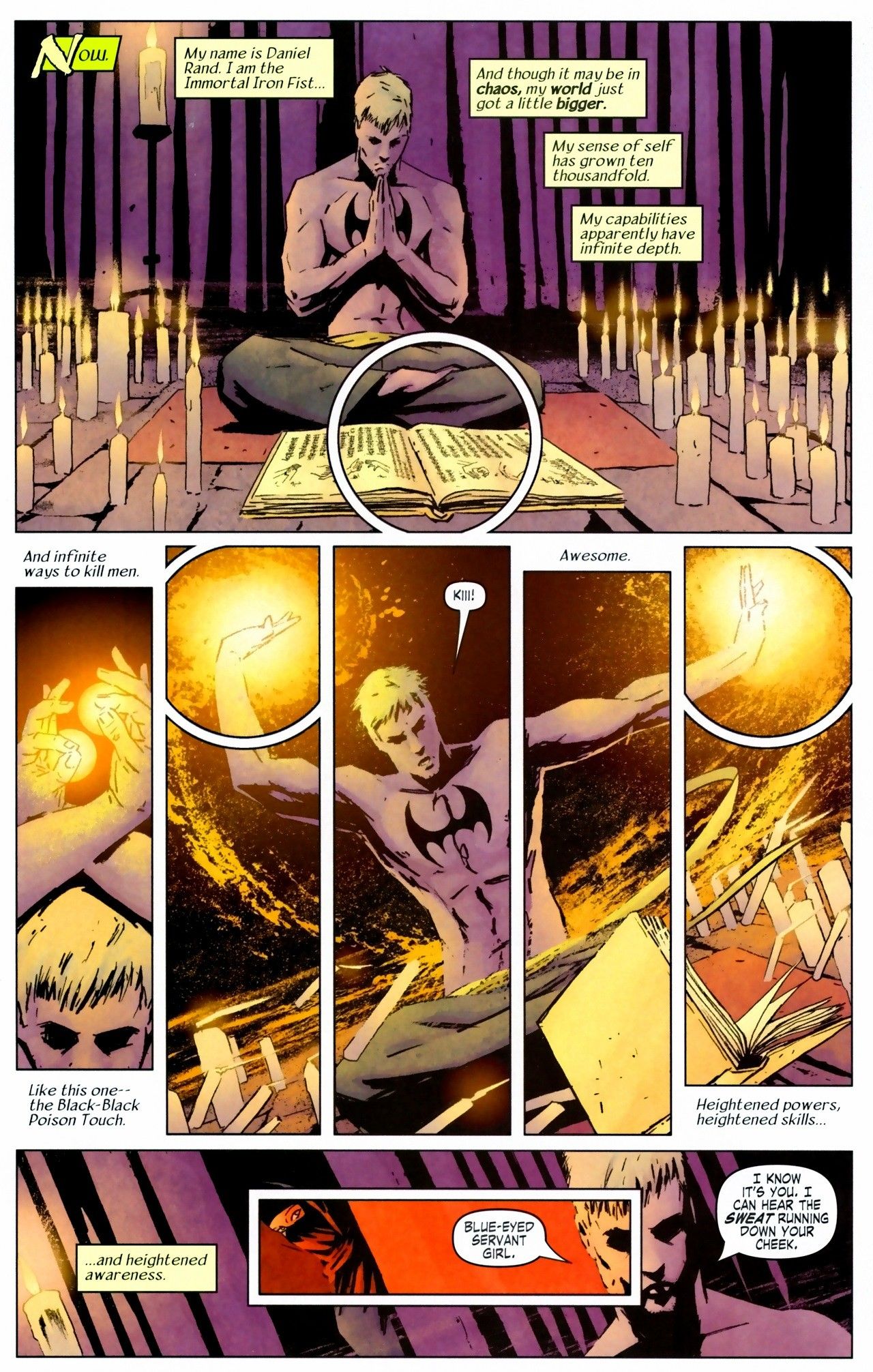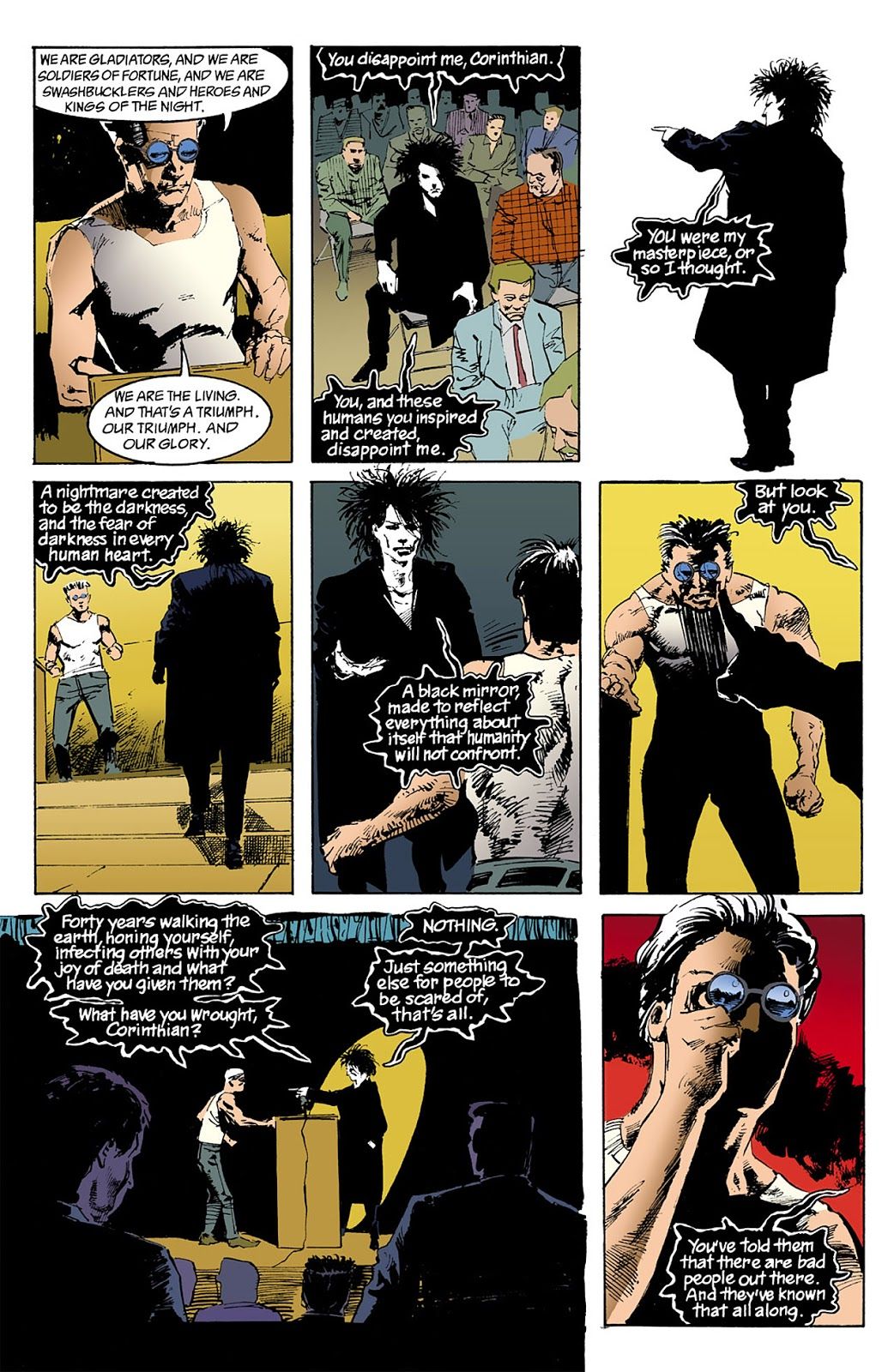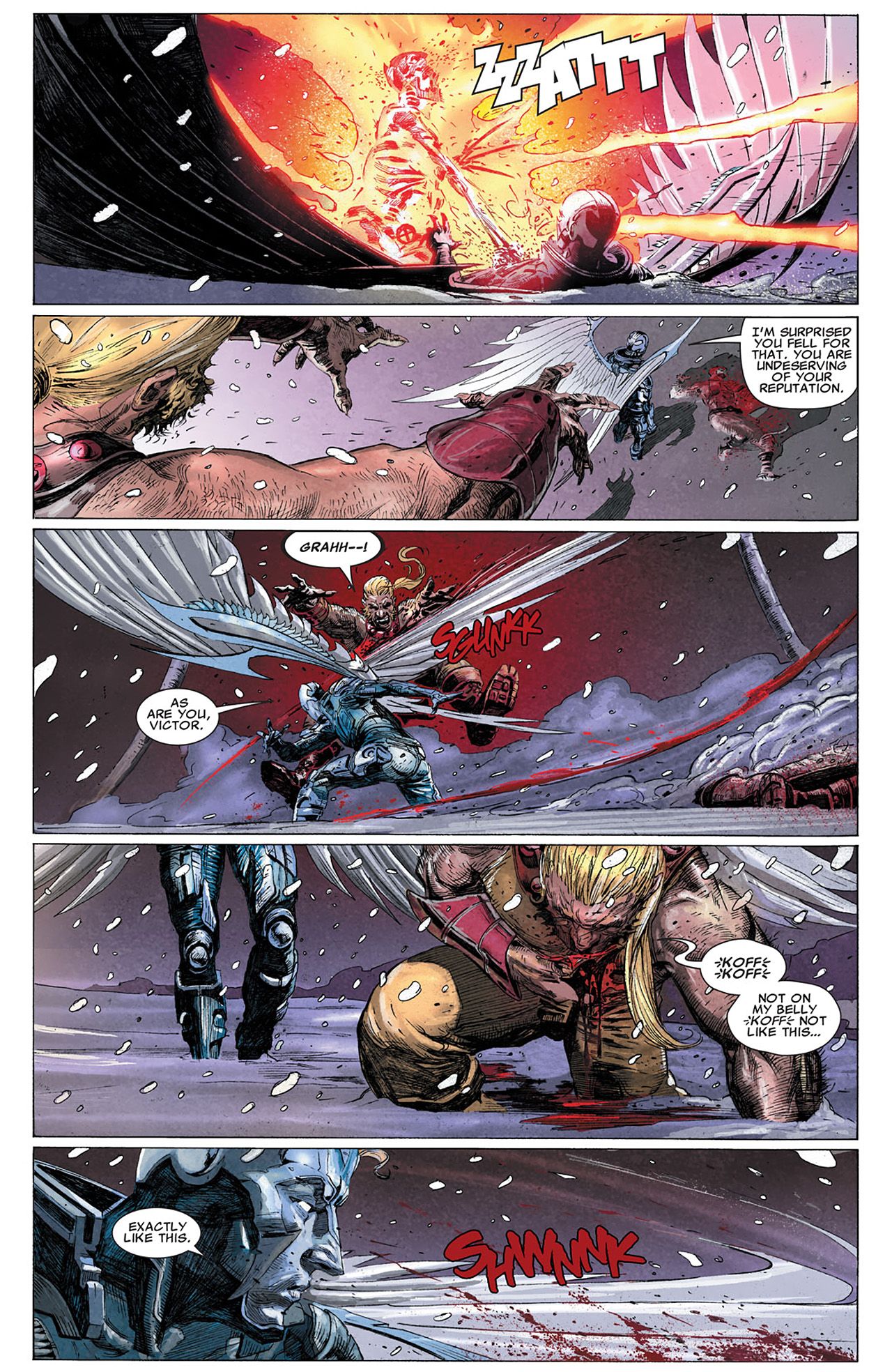Today, we start our countdown of your picks for the greatest comic book storylines of all-time with #100-97.
You voted (over 1,000 ballots cast and a little bit more than the last time we did this countdown) and you all sent in ballots ranking your favorite storyliness from #1 (10 points) to #10 (1 point). I added up all of the points and here we are!
100. "The Painting That Ate Paris" by Grant Morrison, Richard Case and John Nyberg (Doom Patrol Vol. 2 #26-29) - 101 points (1 first place vote)
After their excellent debut on the title with "Crawling Through the Wreckage," Grant Morrison, along with artists Richard Case and John Nyberg, began pushing the boundaries even further with their second arc on the title, which introduces a fascinating new variation on the longtime Doom Patrol foes, the Brotherhood of Evil. The new group is the Brotherhood of Dada, and we see them trying to find a living painting. When they acquire it, it ends up, well, you know, eating all of Paris.
In the early days of their run, Morrison still had the Doom Patrol fairly well planted within the DC Universe, just a weirder area of the DC Universe. I always liked to see that contrast. We see it early in the story when the Justice League shows up to examine the missing Paris and the Doom Patrol similarly shows up and we get to see just how the Doom Patrol is viewed in the DC Universe...
Ultimately, the Doom Patrol and the Brotherhood discover that the addition of Paris into the painting has awoken a powerful and destructive force within the painting known as the Fifth Horseman. If it escapes the painting, it could mean the end of all life on Earth. So the Doom Patrol and the Brotherhood are forced to team-up to stop the Fifth Horseman (how they do is so is very clever).
The Brotherhood of Dada are such great characters. They end up staying behind in the painting even after the Doom Patrol saves the rest of Paris as in the end, it is not so much that they are villains as much as they are just outcasts, and while they cannot fit into the real world, in the painting they can create their own reality.
This was a wonderful follow-up to Morrison's first arc, one-upping an arc that rescued the Doom Patrol from fading into obscurity. Case and Nyberg fit the book's sensibility beautifully.
99. "The Last Iron Fist Story" by Ed Brubaker, Matt Fraction, David Aja, Travel Foreman and Various Artists (Immortal Iron Fist #1-14, Civil War: Choosing Sides and Immortal Iron Fist Annual #1) - 103 points (1 first place votes)
Ed Brubaker and Matt Fraction put together a marvelous revision on the history of Danny Rand, Iron Fist, when he learns that a predecessor Iron Fist, Orson Randall, is still alive! Randall delivers to Danny the Book of the Iron Fist, which tells the history of all previous Iron Fists. It is to help Danny in the coming conflict.
Danny is quickly caught up in a plot involving the terrorist organization, Hydra, and the evil Crane Mother (an ancient enemy of K’un L’un, the mystical city where Danny gained the power of Iron Fist). There are six other mystical cities, and Danny and his allies must protect the cities from a sinister plot concocted by the Crane Mother and Xao, the Hydra representative.
Brubaker and Fraction created a story here that is an absolute blast, with lots of high-flying action, but a good deal of interesting characterization work, as well. The former Iron Fist (who quit after the trauma of World War I), Orson Randall, was a brilliant new character (and a great example of how to make revisionist history work for you as a comic book writer), as were the other Immortal Weapons, the representatives of each of the other mystical cities.
Sprinkled throughout the run were stories of past Iron Fists from the Book (as well as tales of Orson Randall’s earlier days). These allowed the writers to tell vastly different styles of stories, as Randall, in particular, worked well for pulp fiction stories.
David Aja was the main artist throughout the series, and his depictions of action were extremely dynamic. Travel Foreman was the main fill-in artist, and he was just as dynamic, although I must say that Aja also is a brilliant designer, which helped define the various characters beautifully. Aja is a large part of the greatness that is Immortal Iron Fist.
There are other artists who worked on the various one-shots, but Aja and Foreman are the main artists for the series.
98. "The Doll's House" by Neil Gaiman, Mike Dringenberg and Malcolm Jones III (Sandman Vol. 2 #9-16) - – 104 points (1 first place vote)
the main plot of this story is that a young woman Rose Walker finds herself at the center of a sort of dream vortex. Dream of the Endless (Morpheus) might be forced to destroy her to save reality. What he doesn’t realize, though, is that Rose’s current circumstances might very well be part of a sinister plot against Morpheus, in the sense that Morpheus’ devotion to his duty is SO strong that anyone who knows him would know he’d feel obligated to destroy Rose. Thus, that knowledge could be turned against him. But who knows Morpheus that well? That’s a mystery that you’ll have to read the book to discover.
Other notable parts of this storyline is the introduction of the immortal Hob Gadling in a powerful one-off examination of what it would really be like if a guy just could not die. Hob would soon become one of the most popular recurring characters in Sandman.
In addition, we see Gaiman tie in the 1970s Jack Kirby Sandman revamp with the current Sandman series, we see the introduction of a number of characters who live in the same boarding house as Rose (these characters all become much more important in later stories) and we meet another interesting supporting characters, an escaped nightmare named Corinthian, who has become a legend among serial killers. He attends a serial killer convention (that Rose accidentally ends up, as well) where Morpheus shows up and delivers some Spectre-level punishment on the serial killer scumbags…
This story, interestingly enough, was the first Sandman story to get collected into a trade, ahead of the opening arc of the series!
97. "The Dark Angel Saga" by Rick Remender, Jerome Opena, Mark Brooks, Billy Tan, Robbi Rodriguez, Richard Elson, Scot Eaton, Dean White and a whole bunch of inkers (Uncanny X-Force #8, 10-18) – 106 points (2 first place votes)
Uncanny X-Force began with the team trying to stop Apocalypse from rising again. Instead, they just ended up seeing him rise again in the form of their own teammate, Archangel. With Warren Worthington slowly turning evil, X-Force must travel to an alternate dimension, revisiting the Age of Apocalypse, to bring back something that could possibly stop the increasingly evil Archangel as he slowly gathers together a fearsome group of soldiers to serve him in the celebration of the survival of the fittest (through lots and lots of killing). The problem, of course, is that the Age of Apocalypse needs the same remedy that the heroes of our Earth need, as the Age of Apocalypse is being taken over by its OWN Apocalypse-controlled X-Force member, Wolverine! This storyline is ALL about the hard choices. Which reality is more important? And eventually, the most brutal of decisions – if they cannot save their friend from Apocalypse’s control, do they have to KILL him? Archangel’s girlfriend, Psylocke, might be the one who has to make that final decision in this heartbreakingly epic tale that was written by Rick Remender and drawn by a bunch of different artists, most notably Jerome Opena, Mark Brooks and Billy Tan.
Here we see Dark Angel tear through the heroes, including a number of heroes from the Age of Apocalypse...
Jerome Opena is such an amazing artist (especially when paired with colorist Dean White).
Check back tomorrow for the next batch of stories!

